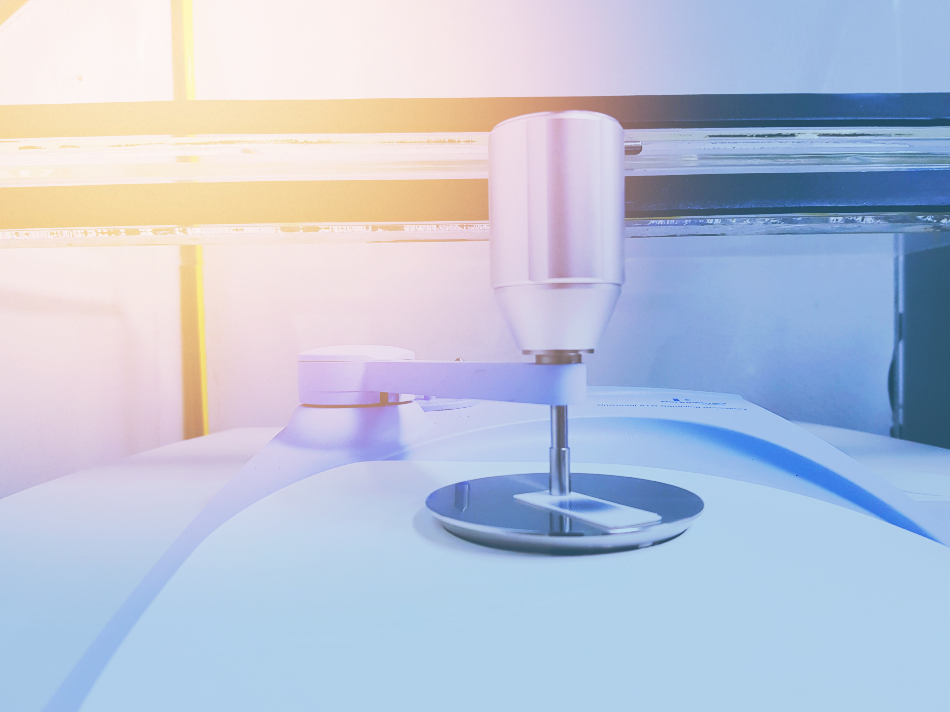
Image Credit: Ken stocker/Shutterstock.com
Infrared (IR) microscopy, or IR microspectroscopy, combines techniques of microscopy with processes derived from spectroscopy. Microscopy is the magnification of specimens for observation, and spectroscopy is the study of interactions between matter and radiated energy, usually in the form of light.
A Quantum Understanding of Light
Isaac Newton first proposed that light was made up of minute particles in 1670 when he observed the decomposition of the sun’s white light into colors in a spectrum after passing through a glass prism.
However, twenty years later, in 1690, Christopher Huygens proposed that light must consist of waves of energy. This description was also observable, as Thomas Young demonstrated in 1801 when he made a light pass through two narrow slits to produce an interference pattern on a surface. The light looked like the pattern of waves caused by a rower’s oar strokes interfering with each other on a lake.
Throughout the latter half of the last millennium, neither description of light, either as a wave or as a particle, could be reliably disputed. This was the case until the beginning of the last century when physicists, including Albert Einstein, Niels Bohr, Max Planck, and Erwin Schrödinger developed the theories of quantum mechanics.
Within this new model, light could be at once a particle and wave, or a wave consisting of particles, due to the peculiar effect of quantum superposition in which particles can exist in two different states at once. This phenomenon is illustrated by the famous Schrödinger’s Cat thought experiment.
Light as Wave Particles Interacting with Matter
Understanding light in this way enabled a better understanding of the way it interacts with matter. The study of interactions between radiated energy and matter is known as spectroscopy. The field began when Newton first analyzed the spectra of light as it passed through a glass prism, as discussed above.
The quantum effects of atomic absorption and emission are understandable within the field of spectroscopy. Here, particles of light (photons) are absorbed within atoms based on correlations of their respective energy levels and then emitted from the atoms.
This is only possible because electromagnetism holds atoms together in an energetic system of a nucleus and a cloud of orbiting electrons.
How Does Quantum Mechanics Enable Infrared Microscopy?
IR microscopy is possible because of the related effects of atomic absorption and emission. As the IR light is beamed onto a specimen sample, the atoms in the sample reflect the light through the described process of absorption and emission.
Because the way that this reflection takes place is reliant on matched levels of energy between photons and electrons, different wavelengths of light beamed onto the sample, and then different wavelengths of light detected from the sample, reveal information about the makeup of electrons in the sample’s atoms.
This energetic information provides a unique fingerprint of the matter in the sample, which can be used to identify its molecular composition.
It is not only absorption and emission which is governed by the laws of quantum mechanics (and which can provide spectroscopic information about a sample), but optical microscopy as well. IR microscopy typically includes an optical stage in which the subject is magnified through a lens.
This magnification is also only possible due to the concurrent description of light as both a wave and a particle. As a wave, light passes through the optical lens and is bent, providing magnification. But as a particle, light is still able to reach the observer predictably.
References and Further Reading
Smith, Y. (2017). What is Infrared Microscopy? [online] News-Medical.net. Available at: https://www.news-medical.net/life-sciences/What-is-Infrared-Microscopy.aspx.
Disclaimer: The views expressed here are those of the author expressed in their private capacity and do not necessarily represent the views of AZoM.com Limited T/A AZoNetwork the owner and operator of this website. This disclaimer forms part of the Terms and conditions of use of this website.